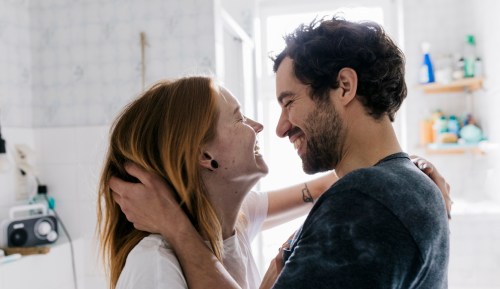There are all sorts of factors that can cause dating burnout and discouragement. You may be weathering societal and cultural pressures to pair up. Or, perhaps the rise of dating apps (and the decision fatigue they produce) is putting you off finding a partner. To combat this, psychologist Elinor Greenberg, PhD, CGP, developed the sofa theory of dating, which helps put daters in the right place to effectively date—with less stress.
Experts in This Article
psychologist who specializes in personality disorders, Gestalt therapy trainer, and author of Borderline, Narcissistic, and Schizoid Adaptations: The Pursuit of Love, Admisration, and Safety
She suggests approaching dating with a simple analogy: Look for a partner like you’d look for a sofa. When she was developing her theory, Dr. Greenberg found that many of the women and women-identifying patients in her therapy practice in New York City, who would appear to have an easy time dating and finding a partner—people who are objectively good-looking, accomplished, and interesting—felt the worst about their dating lives.
Aside from the very real pressures women and femmes face to settle down and have children, her patients cite pressures to look and act a certain way while dating. For example, to always appear interested, but not too interested, warm and friendly, but not too warm and friendly. Dr. Greenberg noticed that these influences were making her patients less interested in dating and more miserable in the process.
“The background of the sofa theory was to help with shame and comparisons, and to help undo the coping mechanisms that are actually counterproductive.”—Dr. Elinor Greenberg, psychologist
“There are a lot of hoops for women to jump through in the dating game, and there’s enormous pressure on women that isn’t on men,” Dr. Greenberg says. “The background of the sofa theory was to help with shame and comparisons, and to help them undo the coping mechanisms they’re using that are actually counterproductive,” she says.
So, knowing what you like and need, finding something that fits your needs, and looking until you find what you want are the frameworks for her method.
5 applications of the “sofa theory of dating” to start following now
1. Get clear on what you want
You wouldn’t buy a sofa with no clear idea of what type or size you need. Before making a decision, you’d probably research the dimensions of the space it’ll go in, and decide what kind of style and material you’re interested in.
Apply the same discernment when it comes to identifying what you want in a potential partners, especially if you’re looking for something serious. Dr. Greenberg advises taking the time to decide what you want in a relationship and in a partner and keep those in mind as you meet people.
For example, when Greenberg was dating before meeting her husband of 45 years, she knew she wanted a partner who could go toe-to-toe with her intellectually, so she only seriously pursued men she found to be very intelligent.
2. But be wary of looking for perfection in a potential partner
Don’t fall into the trap of making such an exhaustive list that nobody fits it, Dr. Greenberg cautions. Instead, One notion she encourages people to let go of is the idea of waiting for your soulmate to arrive.
This doesn’t mean settle for someone you don’t desire, but Dr. Greenberg says waiting for the perfect match to show up while ignoring some pretty good ones can leave you on the sidelines alone. “I believe that there’s thousands of people in the world that any of us can be happy with,” she says.
3. Only go on dates with people who have traits you want in a partner
Dr. Greenberg says you wouldn’t look at sofas in stores you can’t afford, or in styles you don’t like. “You wouldn’t shop in a store that carries sofas you wouldn’t bring home,” she adds—same with people.
On dating apps or IRL, Dr. Greenberg says to match and chat with people who share your interests and values. She adds not to waste your time with people who have greatly differing values from you, or who aren’t interested and serious.
4. Put yourself out there in high-potential places
Even if you’re an online shopper, you wouldn’t expect a sofa to fall into your lap—you would browse around stores and websites to find one you liked.
The same goes for finding a partner, Dr. Greenberg says. You can’t expect to meet someone staying at home, and you won’t meet people you’re interested in if you’re going places that don’t interest you.
So after you identify which traits you want in a partner, and put yourself in situations to encounter people like that. For example, if you want someone athletic, joining an intramural sports league is a good bet.
Conversely, don’t look for potential partners in places where you won’t find them. If you’re more of a homebody and want a partner who is the same, you probably won’t meet a compatible mate at a club. Instead, frequent places and groups that are more aligned with your interests.
5. Use unsuccessful dates as learning lessons not reasons to lose hope
Returning to the sofa comparison, you wouldn’t throw your hands up and say, “I’m not buying any sofa!” if the one you wanted was sold out or if you didn’t find one you liked. You’d make another plan and regroup.
It’s no question that dating can be discouraging, but Dr. Greenberg emphasizes that it’s a numbers game, so part of the process may involve going on lots of dates, not of which will be winners. Take the time to analyze what you’ve learned from bad dates to see what you want in a partner—and what you don’t. If you’re having a string of bad dates and unsatisfying connections, take time to recalibrate, but don’t count yourself out permanently.
Sign Up for Our Daily Newsletter
Get all the latest in wellness, trends, food, fitness, beauty, and more delivered right to your inbox.
Got it, you've been added to our email list.











